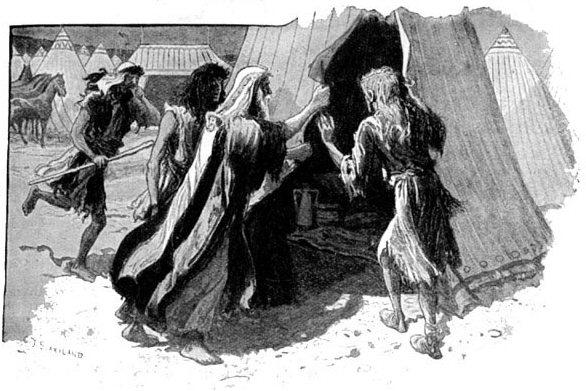As seen in the Jewish Journal
This is the story of Peh Ra. All his life, Peh Ra felt like a cattle owner, walking among his animals and marking them with a red-hot branding iron. Peh Ra had a nice collection of branding irons. Some people he branded “losers,” others were marked “nerds” or “geeks” and, of course, there were those who fell under special categories such as the guy who “knows nothing about…” or the lady who “thinks she is…” and so on. He was the perfect man, the crown of creation, never wrong, always on time, impeccably immaculate. Whenever rebuked for bad-mouthing others, he would waive his hand as if to drive away an annoying bug and shoot back, “but this is the truth, everybody knows it and I would have told her that straight to her face.”
Imagine Peh Ras surprise as he woke up one day to find a whitish spot on his hand.
“Go get our neighbor Shimon Ha-Cohen to review this spot,” he yelled frantically at his wife.
“But you’re a Cohen too. Why don’t you check it yourself, honey?” his surprised wife asked.
“For God’s sake, woman, don’t you know that one cannot review and determine the status of his own leprosy?” the suffering Peh Ra retorted.
After the respected priest examined the blemish over a period of two weeks Peh Ra was officially declared a leper. The hunched figure of Peh Ra was seen that night dragging his feet outside the city gates. Sitting there all by himself afflicted, ostracized and lonely, he had to repeatedly yell a warning to all who came too close: “I am impure! I am a leper!” Every day he would examine his body to see if the plague was spreading, and indeed it was. To his utter horror he watched how the tiny white spot grew and grew until his whole body was covered, and then when there was not one leprosy-free spot left on his body, poor Peh Ra was allowed to rejoin his family and community as a pure man.
This strange story could have easily taken place in biblical times, according to our sages. They see the main theme of this week’s parsha, Tazriah/Metzorah (usually translated as leprosy), not as a physical disease but as a spiritual disorder. It is the plague of the gossipmonger, the person who knows exactly what the ailments of society are, and more specifically, of every individual he ever came in contact with.
Mr. Peh Ra — which means “Bad Mouth” — was right when he told his wife that one cannot review his own leprosy, this is what the law says. Metaphorically it means that the same person who has no problem branding others as “losers” just because of how they dress or based on a superficial, passing acquaintance, fails to recognize any mistakes or faults when it comes to his own character. The educational punishment for such anti-social behavior is fully reciprocal, measure for measure. Mr. Know-It-All Perfect Guy will now sit outside the city and state loudly that he is “impure.”
His impurity stems from his failure to see the good in others and his insistence on emphasizing their mistakes and shortcomings, but now he has no choice but to state his misfortune loudly over and over to make sure that everybody knows it. This is also the reason for the seemingly illogical law mentioned before. The Torah requires the metzorah — leper — to stay outside the camp as long as he is afflicted, but once he is totally cured or, to the contrary, totally covered with leprosy from top to bottom, he is allowed back into the camp. If the message of leprosy is educational, then the goal was achieved. Once the person is fully afflicted, there is no way for him to point out others’ faults without being ridiculed: “Look who’s talking.”
As for us, although leprosy in its rabbinical interpretation is not seen today, we should not forget Mr. Peh Ra’s lesson: Let us put the branding iron aside and look for the good qualities in one another.








Ohr HaChaim Yomi – Emor